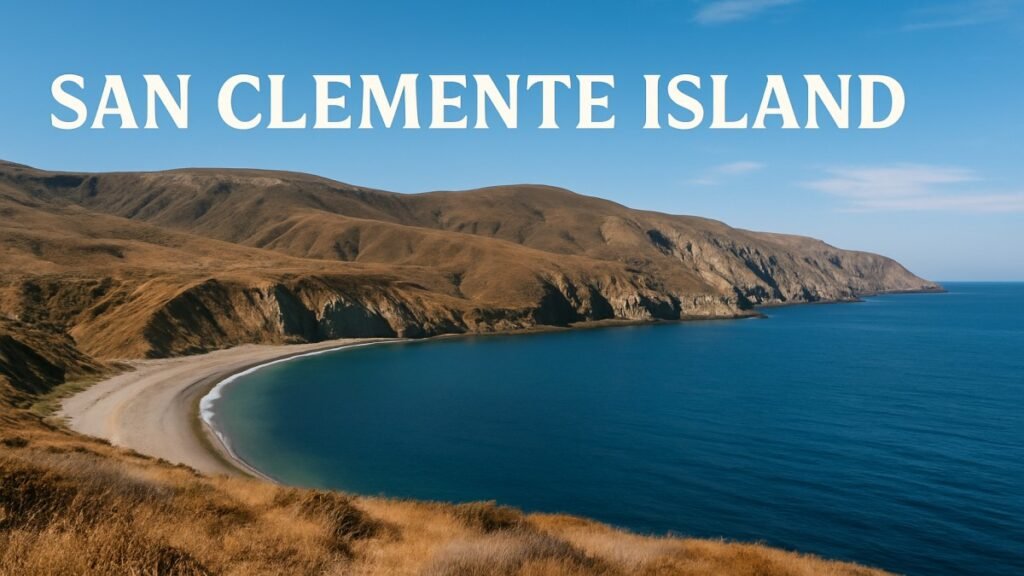Introduction to San Clemente Island
San Clemente Island might not be on your travel bucket list—but maybe it should be. Located about 55 miles off the coast of Southern California, this rugged, remote island is more than just a strip of land in the Pacific Ocean. It’s a vital cog in the machinery of the U.S. Navy and a cradle of unique wildlife.
Let’s dive into the rich layers of this mysterious and strategic place.
Where is San Clemente Island?
San Clemente Island is the southernmost of California’s Channel Islands. Stretching around 21 miles long and about 4.5 miles wide, it sits southwest of Los Angeles and is owned entirely by the United States Navy.
A Brief History of the Island
Originally inhabited by the Tongva people, San Clemente Island was a seasonal fishing and gathering site. Spanish explorers charted the island in the 16th century and named it after Saint Clement. The U.S. Navy took control of it in 1934, and it has been a restricted military zone ever since.
The Geography and Climate
Rugged Terrain and Natural Features
The island’s topography is raw and untamed—rolling hills, steep cliffs, and deep canyons. It’s surrounded by kelp forests and rocky shores, which add to its striking isolation.
Weather Patterns and Ecosystem
Expect a Mediterranean climate here: warm, dry summers and mild, wetter winters. Fog and strong winds are frequent, shaping the vegetation and wildlife that thrive in these conditions.
Human Presence on San Clemente Island
Indigenous Inhabitants and Early Exploration
Archaeological finds show that the Tongva people used the island for thousands of years before European contact. Shell tools, fire pits, and even burial sites have been unearthed by researchers.
The U.S. Navy’s Occupation
Training and Operations
Since the 1930s, the island has functioned as a full-scale naval training ground. From SEAL training to underwater demolition exercises, it’s an ideal location because of its seclusion.
Access Restrictions and Civilian Presence
The island is off-limits to the general public. Only Navy personnel, contractors, researchers, and select visitors with clearance are allowed. A small temporary population of around 300 lives and works here at any given time.
The Island’s Military Significance
Role in Naval Training
San Clemente Island is the Navy’s largest live-fire training facility on the West Coast. Troops simulate real combat scenarios, including amphibious landings and airstrikes.
Live-Fire and Amphibious Exercises
The island has mock urban settings, radar stations, and even aircraft landing strips. It’s like a mini battlefield—perfect for testing war readiness.
Modern Warfare Technology Testing
San Clemente is also a test bed for cutting-edge military tech like drones, missile systems, and electronic warfare tools.
Wildlife and Biodiversity
Endemic Species
You’ll find animals here that don’t exist anywhere else. Think: San Clemente Island fox, San Clemente loggerhead shrike, and rare succulents and wildflowers.
Conservation Efforts
Balancing Military and Ecological Interests
Despite the intense military presence, the Navy has made strides in conservation. Programs are in place to monitor wildlife, prevent extinction, and rehabilitate native habitats.
Archaeological and Cultural Insights
Ancient Artifacts and Burial Sites
Archaeologists continue to uncover the island’s Native American heritage. Artifacts hint at a rich cultural past that is being carefully preserved.
Preservation vs. Progress
It’s a balancing act. While the Navy conducts its operations, efforts are made to ensure that cultural and environmental treasures aren’t bulldozed in the name of security.
Myths, Mysteries, and Pop Culture
Secret Projects and UFO Rumors
Some conspiracy theorists claim that the island hides black projects, secret bases, and even UFO testing. No concrete evidence backs this up, but the mystique continues.
Mentions in Media and Pop Culture
You may have heard of San Clemente Island in military documentaries or action novels, often portrayed as a high-security, secretive location—which, in many ways, it is.
Conclusion
San Clemente Island is a paradox—off-limits but crucial, wild yet militarized, isolated but influential. From secret military drills to rare species fighting for survival, it embodies a compelling blend of history, power, and nature.
It’s not just an island. It’s a story—one that’s still unfolding.
FAQs
1. Is San Clemente Island open to the public?
No, access is restricted to authorized personnel such as Navy staff, researchers, or contractors.
2. What wildlife is unique to the island?
Endemic species like the San Clemente Island fox and the loggerhead shrike are found only here.
3. Why is San Clemente Island important to the Navy?
It provides a secluded, full-scale training ground for amphibious assaults, air-to-ground warfare, and tech testing.
4. Are there any ghost stories or myths linked to the island?
Yes, from whispers of secret projects to UFO sightings, the island fuels plenty of speculation.
5. How does the Navy balance ecology and training?
Through ongoing conservation efforts, wildlife monitoring, and eco-conscious development.








